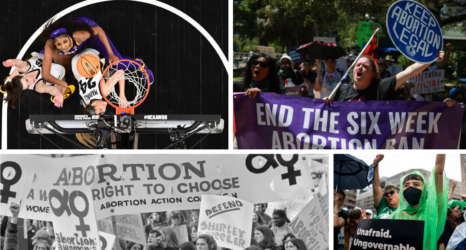Chris is a straight white man in his early 20s living in Maryland. Chris is also transgender. In October 2007, he left his job at a local amusement park because he could no longer put up with the severe homophobic harassment and transphobic dress codes he was forced to endure.
From the beginning, the pay was poor and Chris hated the job, but he stayed because he needed the work. His wife was also able to find a job there so that they could carpool together and save on gas. He put in long hours to make up for the low hourly wage. He even put up with being forced to wear the female uniform, even though this caused him great anxiety as a trans man.
To add insult to injury, when rumors spread that Chris and his wife were lesbians, they were not allowed to work together, and Chris was reassigned to an isolated workstation where he had very little contact with co-workers. Unable to endure such a hostile work environment, Chris and his wife walked away.
Unfortunately, Chris’ experience is far from isolated. According to a recent national study of transgender discrimination, 90 percent of those surveyed reported experiencing harassment, mistreatment or discrimination on the job. Results from the same survey also show that transgender people of color are particularly vulnerable to employment discrimination. 26 percent of respondents reported losing their jobs due to their gender identity or expression. But when broken down by race, those numbers went up to 32 percent for black respondents and 36 percent for multiracial or American Indian respondents.
When talking about the pervasive employment discrimination transgender people face, we can’t just look at gender–other structural factors are at play. In addition to race, my own research found that socioeconomic status plays a big role in the experiences of transgender workers.
Take Chris, for example. He graduated from high school, but due to a lack of funds was unable to attend college. Combined with his young age and, therefore, short work history, Chris’ employment opportunities are limited to low-wage, low-skills jobs such as customer service.
Wendy, a woman I spoke with when interviewing transgender people about their workplace experiences, also pointed to her socioeconomic status as a source of the severe discrimination she had faced: “[A] friend of mine who’s trans … she’s very educated. Very well-to-do. And she’s, like, well, you just gotta keep looking. And I’m, like, you don’t get it.”
After high school, Wendy went on to become a master level auto technician through trade school. When she came out and began to transition, however, she suffered immense discrimination, lost her job and is struggling to make ends meet.
For both Chris and Wendy, their low socioeconomic status contributed to their experience of transgender employment discrimination. Our conversations basically boiled down to survival issues.
For others I spoke with, having a strong educational background provided a buffer from workplace discrimination. Several people also pointed to their professional, high-skill jobs as part of the reason they were able to avoid discrimination as a transgender person. Tori, a forensic scientist who works in law enforcement, attributed her successful on-the-job transition in part to her educational attainment, which gave her access to a white-collar job. Tori had originally considered transitioning nearly 20 years ago. At that point in her life, she had no college education and was working construction; her prospects were not good, she told me. After waiting, earning a bachelor’s degree and moving into a professional career requiring a special skill set, Tori was able to transition with minimal trouble.
These stories remind us of the importance of taking an intersectional lens to the work we do. Transgender employment discrimination is about gender, yes, but it is also about race, socioeconomic status, gender expression, sexuality and numerous other factors. We need to take into account people’s beautifully complicated identities and social locations to get a true understanding of the situation at hand. This understanding also informs the kind of action we take. Yes, we need to continue the fight to pass the Employment Non-Discrimination Act, which would extend employment protections to LGBT people at the federal level. But we must also ensure that everyone has access to good jobs, especially low-income transgender people and transgender people of color. Which is why the work of Jobs with Justice, Queers for Economic Justice and the Sylvia Rivera Law Project is vital to achieving economic justice for everyone, including transgender people.
The stories shared in this post are from the author’s book Transgender Employment Experiences.
Photo from Flickr user WeNews under Creative Commons 2.0





